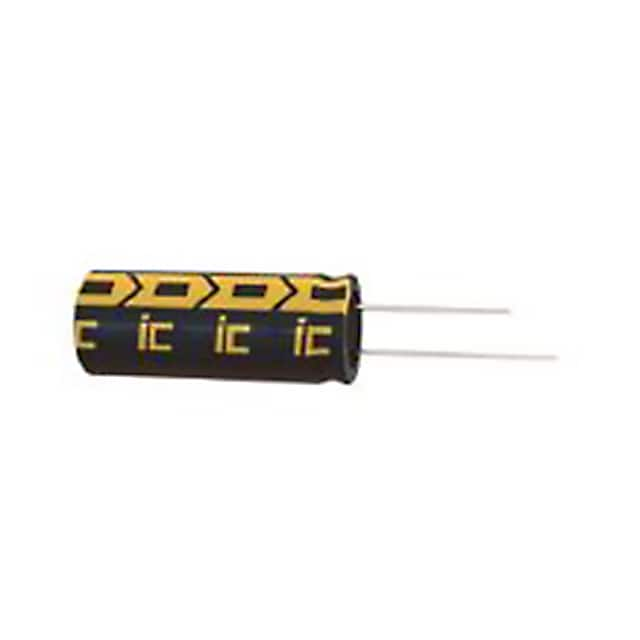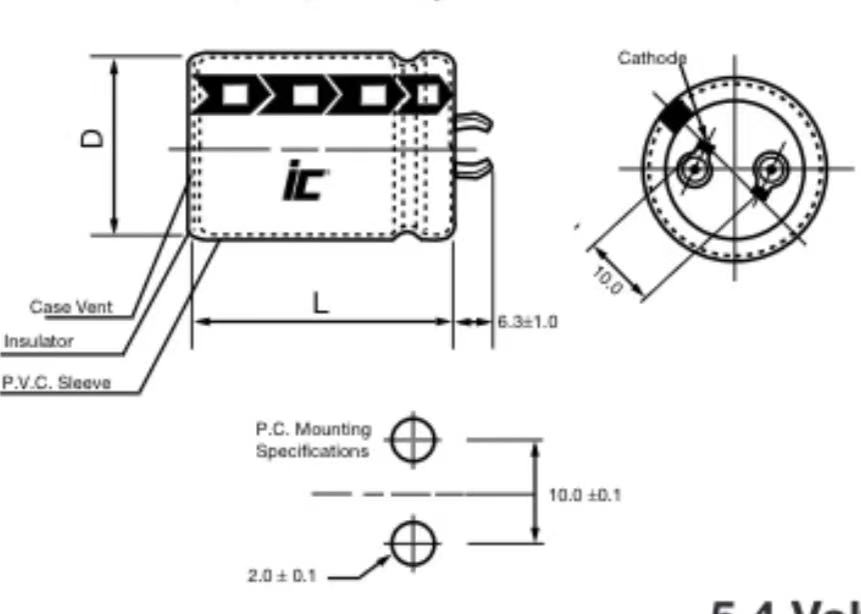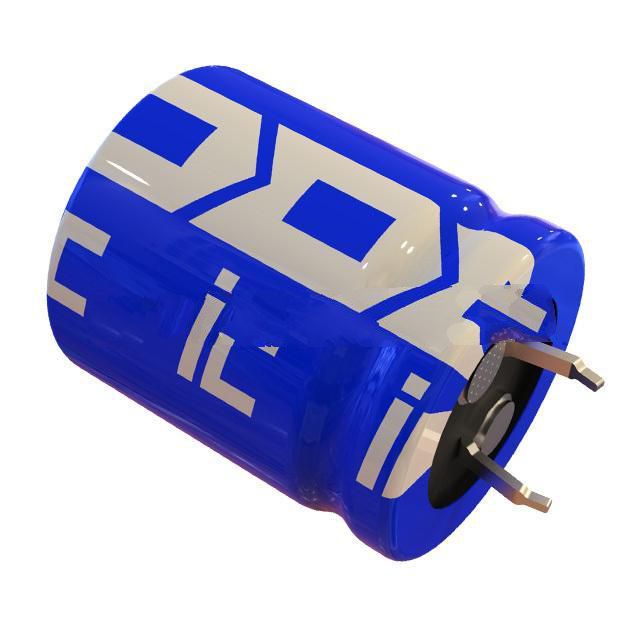Electric double layer capacitor: introduce & working principle

What is an electric double layer capacitor?
Electric double-layer capacitor is a type of supercapacitor and is a new type of energy storage device. Electric double-layer capacitors are somewhere between a battery and a capacitor, and their extremely large capacity can be used as a battery.
Compared with the battery using the electrochemical principle, the charging and discharging process of electric double-layer capacitor does not involve the change of material at all, so it has the characteristics of short charging time, long service life, good temperature characteristics, energy saving and green environmental protection.
Electric double-layer capacitors have very small spacing between electric double layers, resulting in weak withstand voltage capacity, generally not exceeding 20V, so they are usually used as energy storage components in low-voltage DC or low-frequency occasions.
Electric double-layer capacitors usually contain four parts: double electrode, electrolyte, current collector, and separator. Electric double-layer capacitors Supercapacitors use the electric double-layer structure composed of activated carbon porous electrodes and electrolytes to obtain ultra-large capacitance, and the capacitance of electric double-layer capacitors is as high as thousands of farads.

What is the principle of electric double layer capacitor?
Electric double-layer capacitor is a new capacitor based on the interface electric double-layer theory proposed by Germany physicist Helmholtz. It is well known that the surface of the metal electrode inserted into the electrolyte solution will have excess charges with opposite signs on both sides of the liquid surface, resulting in potential differences between the phases.
Then, if two electrodes are inserted into the electrolyte at the same time, and a voltage less than the decomposition voltage of the electrolyte solution is applied between them, then the positive and negative ions in the electrolyte will move rapidly to the two poles under the action of the electric field, and form a tight charge layer on the surface of the two electrodes, that is, the electric double layer, which is similar to the polarization charge generated by the dielectric in the traditional capacitor under the action of the electric field, resulting in a capacitive effect, and the compact electric double layer is similar to that of a plate capacitor.
However, due to the tight charge layer spacing, which is much smaller than the distance between the charge layers of ordinary capacitors, it has a larger capacitance than ordinary capacitors.

What are the categories of electric double-layer capacitors?
According to the different characteristics of electric double-layer capacitors, such as material, structure and capacitance value, they can be divided into the following categories:
The capacitor electrode is made of fibrous materials, such as carbon fiber and metal fiber, and the electrolyte is an organic solution, which has the characteristics of high density, high power and good impact resistance, and is suitable for application scenarios with high heat and limited space.
The capacitor electrode is made of carbon material, and the electrolyte is an organic solution or polymer, which has the characteristics of low cost, low internal resistance and high capacitance value, and is suitable for low-voltage and large-capacity application scenarios.
The capacitor electrode is made of nanostructured materials, such as carbon nanotubes, metal nanowires and nano-oxides, which have the advantages of high surface area, high charge-discharge speed and long life, and are suitable for high-power and miniaturized application scenarios.
The capacitor electrode is made of metal oxide materials, such as manganese, nickel, chromium and tantalum, etc., and the electrolyte is an organic or inorganic solution, which has the characteristics of high voltage, low leakage current and good high temperature resistance, and is suitable for high-voltage, small and medium-capacity application scenarios.

1、Low power capacitor: These capacitors have the characteristics of good isolation and stability performance, and are suitable for some low-power applications.
2、Symmetrical electric double-layer capacitors: These capacitors are designed with a special structure to achieve higher energy and power density, making them suitable for high-power applications.
3、Cohesive Electric Double-Layer Capacitors: These capacitors improve the performance of capacitors by improving electrode materials and electrolytes for applications that require high energy density and long life.
What is the significance of electrical double layer in supercapacitor?
The electric layer is an important part of the electric double-layer capacitor, and its main functions are as follows:
An electrochemical interface is formed on the surface of the electrode, and since this interface exists only on the surface of the electrode, its area is much larger than the surface area of the electrode, which increases the capacitance of the capacitor.
Since an electric layer is formed on the surface of the electrode, the surface area of the electrode is increased, which increases the capacitance of the capacitor.
The electric layer is composed of charged ions, has a high electrical conductivity, and can store a large amount of charge, so that the electric double-layer capacitor has a very low internal resistance and can discharge quickly.
Since the electrical layer can store a large amount of charge and is easy to charge and discharge, the impact of current can be reduced, and the life of the capacitor can be extended.
What is the difference between double layer capacitor and Pseudocapacitor?
A pseudocapacitor, also known as a dielectric capacitor, is a type of capacitor that uses the charge distributed along the surface in a dielectric medium to store electrical energy. Its structure is relatively simple, consisting of a dielectric material between the two electrodes of the capacitor, usually made of polymer, alumina, etc. When an external voltage is applied to the capacitor, the charge accumulates between the two plates of the capacitor.Electric double-layer capacitors and pseudo-capacitors are two types of energy storage devices, and the following are the differences between electric double-layer capacitors and pseudo-capacitors:
1. In principle, electric double-layer capacitors use the potential difference between the electrode material and the electrolyte in the electrolyte to store charge, while pseudo-capacitors use the charge in the dielectric to store electric energy.
2. Structurally speaking, the core of electric double-layer capacitors is the electrode material, with a large surface area; The core of a pseudocapacitor is a dielectric material and is small in size.
3. In terms of working mode, the potential difference of electric double-layer capacitors will change with the change of external voltage, so it has a certain degree of charging and discharging, and is suitable for high-power output and storage environments that require a short time. On the other hand, the potential difference of pseudocapacitors is fixed, so they are not chargeable and dischargeable, so they are suitable for environments where stable output is required for a long time.
4. In terms of stored energy, electric double-layer capacitors mainly rely on the separation and accumulation of charges to store energy, and have a large charge storage density and a long service life; Pseudo capacitors, on the other hand, mainly rely on ion diffusion and chemical reactions to store energy, and have a high energy density, but a relatively short service life.
5. In terms of application scenarios, electric double-layer capacitors are mainly used in scenarios that require large capacity and long life, such as electric vehicles, power electronic equipment, etc.; Pseudo capacitors, on the other hand, are mainly used in scenarios that require high energy density and short lifetime, such as mobile devices, energy storage systems, etc.

What are the characteristics of electric double-layer capacitors?
1. High capacitance: The capacitance of electric double-layer capacitors is very large, usually hundreds or even thousands of times larger than that of ordinary capacitors. This is because the electric double-layer structure inside the electric double-layer capacitor can provide a large surface area, which greatly increases the charge storage capacity.
2. High energy density: Electric double-layer capacitors have a relatively high energy density, which means it can store more electrical energy. Due to its electric double-layer structure, it can provide a large surface area, making it capable of storing more charge.
3. High charge/discharge speed: Electric double-layer capacitors have good charge/discharge speed, which can charge and discharge quickly. This is due to the fact that the charge in the electric double-layer structure can move quickly between the positive and negative electrodes.
4. Long life: Since there is no fixed dielectric inside the electric double-layer capacitor, the internal structure of the capacitor is relatively simple. As a result, electric double-layer capacitors have a relatively long lifespan.
5. Voltage stability: The voltage stability of electric double-layer capacitors is good, and the output voltage can be maintained relatively stable. This is because the potential difference between electric double-layer capacitors is able to maintain an equilibrium between the positive and negative electrodes.
What are the main uses of electric double-layer capacitors?
1. Power backup: Electric double-layer capacitors have the advantages of large capacity and long cycle life, and are more suitable for power backup applications than batteries. In the event of a sudden power outage or an unstable power grid, the energy stored through electric double-layer capacitors can provide faster and more stable protection for the equipment.
2. Energy recovery and reuse: Energy storage technologies are becoming more and more widely used, including energy recovery and reuse. Electric double-layer capacitors can store, recycle and reuse surplus energy, thereby reducing energy waste and reducing operating costs.
3. Balancing energy demand: The energy demand of many electrical and electronic devices is not fixed, which greatly affects the stability and reliability of the power supply. Electric double-layer capacitors can balance energy demand, reduce fluctuations, and ensure the stability and reliability of electronic systems.
Statement
All articles (images, texts, audio) on this site are uploaded and shared by users, or integrated from relevant internet sources, only for user's learning. If your rights are violated, please contact the administrator to delete! Link to this article: https://www.jinftry.com







